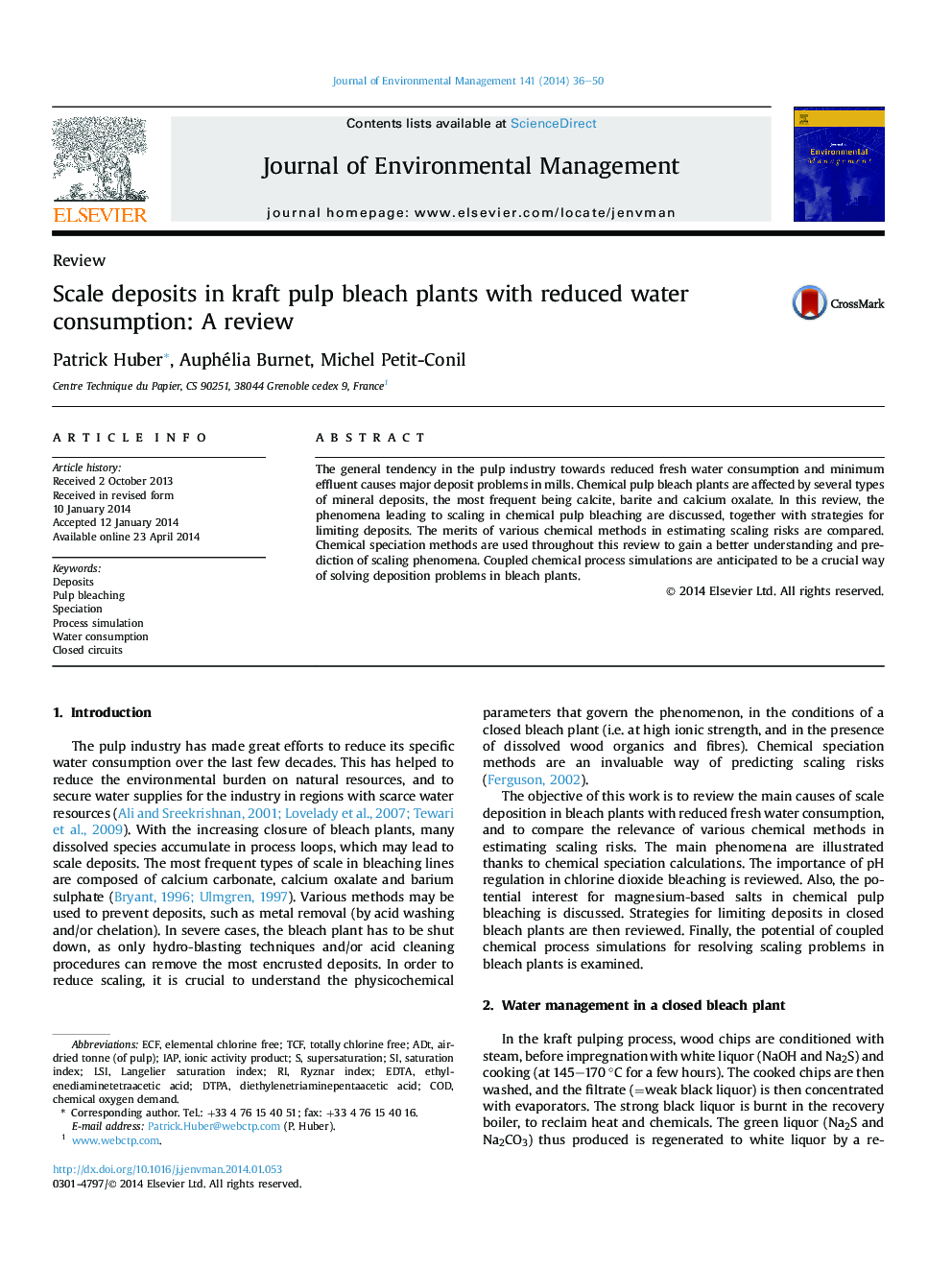| Article ID | Journal | Published Year | Pages | File Type |
|---|---|---|---|---|
| 1055907 | Journal of Environmental Management | 2014 | 15 Pages |
•The most frequent deposits in bleach plants are Calcite, Barite and Calcium Oxalate.•Chemical speciation methods can predict scaling risks in bleaching effluent.•Coupled chemical process simulations help anticipate deposition problems.
The general tendency in the pulp industry towards reduced fresh water consumption and minimum effluent causes major deposit problems in mills. Chemical pulp bleach plants are affected by several types of mineral deposits, the most frequent being calcite, barite and calcium oxalate. In this review, the phenomena leading to scaling in chemical pulp bleaching are discussed, together with strategies for limiting deposits. The merits of various chemical methods in estimating scaling risks are compared. Chemical speciation methods are used throughout this review to gain a better understanding and prediction of scaling phenomena. Coupled chemical process simulations are anticipated to be a crucial way of solving deposition problems in bleach plants.
